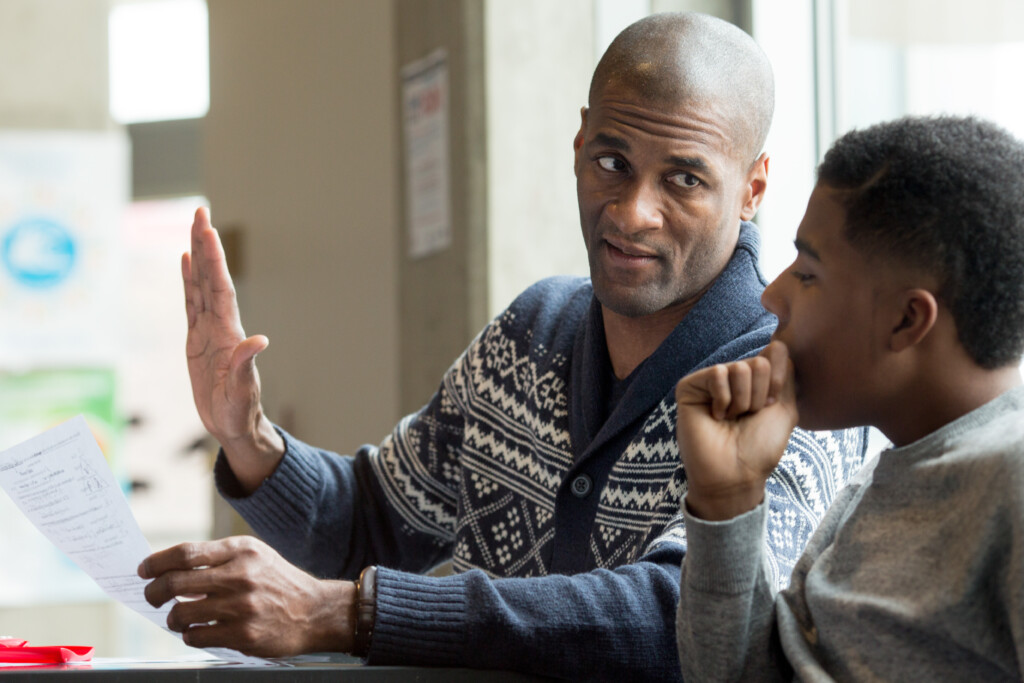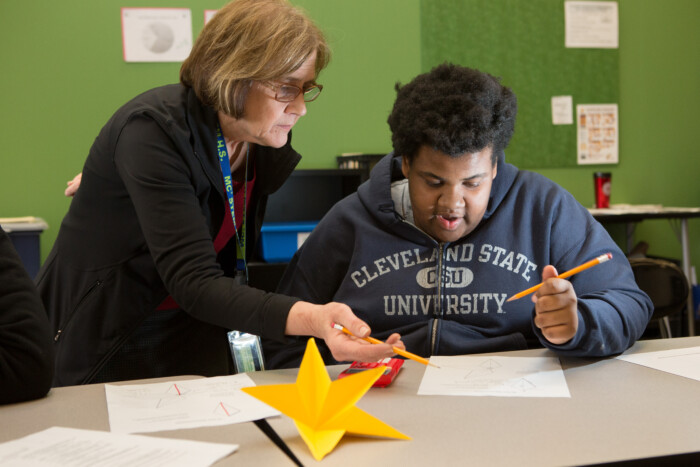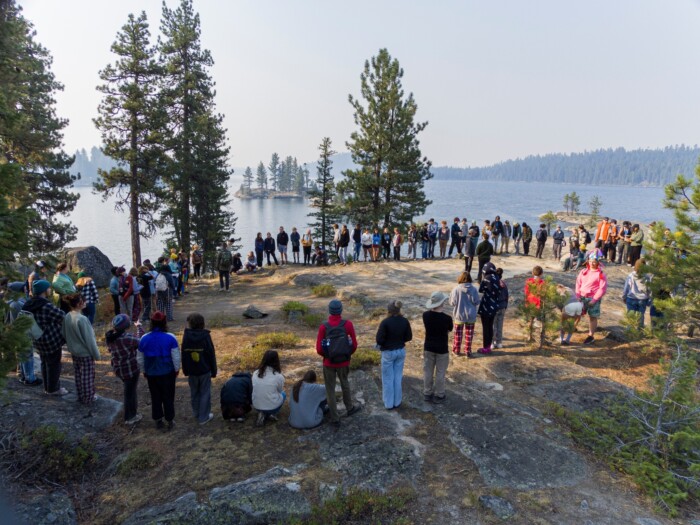Other Support & Guidance Functions
In addition to the core functions, there are five other dimensions of support and guidance related and often incorporated into advisory systems: positive culture, skill building, coordinating work-based learning, building social capital and promoting wellness.
3.1 Positive Culture
3.2 Skill Building
3.3 Coordinating Work-based Learning
3.4 Building Social Capital
3.5 Promoting Wellness



In addition to the core functions, there are five other dimensions of support and guidance related and often incorporated into advisory systems: positive culture, skill building, coordinating work-based learning, building social capital and promoting wellness.
Positive Culture
A positive school culture is one where all students feel safe, respected, and valued. It is a culture where students are motivated to learn and grow, and where they feel supported by their teachers and peers. Important elements of a positive culture include strong relationships, norms of respect, high expectations, and celebration of growth. Effective advisory systems contribute to all these dimensions and yield a foundation of belonging and safety.
Advisory systems are the focal point for cultivating learner agency and a sense of direction and possibility. When this extends to classrooms, and learners are encouraged to engage in work that matters to them and their community, it creates a school culture alive with possibility.
Crew is both a structure and a culture in EL Education schools. As a structure, it can be similar to a regular advisory period. As a culture, it serves as an ethos of inclusion: students strive to reach ambitious goals together as a community. They are responsible for their own well-being and their classmates’ well-being.
Schools establish and cultivate Habits of Character, such as Respect, Responsibility, Courage, Kindness, and promote and discuss these habits every day, within and beyond classrooms. The school community exemplifies educator Kurt Hahn’s vision that we are all “crew, not passengers,” working together as a team for the common good.
Skill Building
Advisory systems often include self-management and relational skill building and may include or coordinate supplemental development of other priority skills such as financial literacy, digital citizenship, study skills and project management. Advisors may refer students to academic skill-building programs to close gaps and avoid starting college in remedial courses. As seen with Thinkist, peer tutoring can be valuable to both tutor and tutee and can be coordinated in an advisory.
Compass
Compass by Valor Collegiate is a set of advisory protocols that develop mindfulness, self-regulation, and relationship skills. It is used by schools nationwide.
Wayfinder Curriculum
The Wayfinder curriculum enables students to identify and navigate specific requirements for desired majors and areas of focus, as well as gain the necessary social capital to scaffold this part of their journey. Wayfinder’s Core Skills incorporate meaning-making, critical thinking, and future-ready skills in order to connect classroom learning to the real world.
Summit Public Schools
Mentor groups at Summit Public Schools help students develop the trust and confidence that allows them to take risks, ask for help, and persevere. Students meet one-on-one with a dedicated mentor who knows them deeply and supports them in setting and achieving their goals, all the way through college acceptance. Mentor groups also provide a safe and close-knit setting for building community and developing Habits of Success.
EdReady
EdReady is a personalized college math and English readiness platform designed to help learners test their college readiness, see study options, and gain a personalized learning path to fill in knowledge gaps. It’s offered by support programs like Texas College Bridge and by school districts.
Coordinating Work-based Learning
“Kids need opportunities to experiment with careers and “test and try” their interests through real-world experiences while they’re in middle and high school, so they can better craft a deliberate postsecondary plan based on passions and ultimate career goals,” said Jean Eddy, CEO of American Student Assistance in her introduction to Elliot Washor’s new book Learning to Leave: How Real-World Learning Transforms Education.
Advisors often help learners identify work-based learning opportunities including job shadows, client projects, and internships.
Big Picture Learning
Big Picture Learning is a network of schools with 10 distinguished features including two day-a-week internships with experts in their field of interest, completing authentic projects and gaining experience and exposure to how their interests intersect with the real world. Students and advisors use the Imblaze platform to secure and manage internships. Advisors often visit internship sites twice a year to promote quality and integration.
NAF
NAF helps high schools implement high-quality career-themed academies including rigorous and relevant career-focused curricula, career exploration activities and career preparation activities including internships. KnoPro is a new platform that includes industry challenges and skill-building experiences.
Sconzo Early College
Sconzo Early College in Humble, Texas features four years of service learning. It is coordinated in collaboration with the community and focuses on priority skills and delivering value.
Building Social Capital
Julia Freeland Fisher’s important 2018 book, Who You Know, made the case for social capital as a priority youth development outcome. Researchers describe social capital as the measure of our connections with others, or, the amount of emotional and practical support, trust and help, that emerges from caring relationships. In the knowledge economy, the distribution of social capital is vastly unequal.
Schools can play a pivotal role in leveling the social capital playing field. Relationship mapping, for example, can provide a tangible visual of a student’s branches of networks, including where they can focus on building more connections or deepening existing relationships.
Similarly, in a 2020 paper, Fisher outlined four Missing Metrics of social capital: the quantity of relationships, the quality of relationships, the structure and diversity of networks, and the ability to mobilize relationships.
Relationship Mapping
“Whether you’re serving in a support and guidance function or an unbundled learning function, relationship mapping is a strategy that can ensure that you’re actually paying attention to the social side of opportunity and to the existing relational assets of your students’ lives,” Freeland Fisher said.
The Forest School
The Forest School is a diverse-by-design microschool in Fayetteville, Georgia where building social capital is a priority. Students maintain a Social Capital Tracker where they log the relationships they maintain and build with: people like them, people different from them, and people with influence. The school’s co-founder, Tyler Thigpen, describes this exercise as a way to collect data on students’ “bonding, bridging, and linking social capital.”
Achievement First
Greenfield, a Northeast school model by Achievement First, pioneered the concept of “dream teams,” which set each student up with their own “personal community of champions.” Members of dream teams can include parents, coaches, educators, siblings, peers, clergy members and/or close family friends. By sharing their interests and aspirations with this small group, students gain trusting relationships with caring adults and peers, demonstrate agency by directing their focus while receiving support and feedback and also become accountable for making progress toward their goals.
Promoting Wellness
The global pandemic brought wellness to the forefront. Both qualitative and quantitative data from the last few years have made it abundantly clear that wellness plays a huge role in social and academic growth. Mike Ruyle and Dr. Jason Cummins co-authored The School Wellness Wheel, a great framework for approaching whole child wellness. Schools like Phoenix Academy Charter utilize a primary person model for 1:1 advisory. Similarly, a number of additional schools and organizations are taking strides to put mental health and wellness at the forefront of learning.
Challenge Success
Challenge Success partners with school communities to elevate student voice and implement research-based, equity-centered strategies to improve student well-being, engagement, and belonging. Conditions for well-being include reducing unhealthy stress, creating a web of care, improving sleep and building relationships.
The Student Thriving Index
The Student Thriving Index from Character Lab is a formative assessment of social, emotional, academic, and physical thriving. Survey items are co-developed by researchers in consultation with students and staff from partner schools. Results link to Character Lab Playbooks, resources with advice on how to take action.
Big Picture Living
Elliot Washor, co-founder of Big Picture Learning, created a campaign to build, adapt and share a culture of health. Big Picture Living focuses on evidence-based wellness practices in six domains: movement, sleep, nutrition, substances, stress management, and relationships.
Christina Theokas on Whole Child Design
“Embedding a whole child purpose in a school requires you to think about each individual child,” she said. “Then we’re no longer thinking about sorting, tracking, etc. […] We have to disrupt and dismantle the systemic inequities that have been built in from the very beginning.” Check out the recap of our conversation with Christina Theokas!

